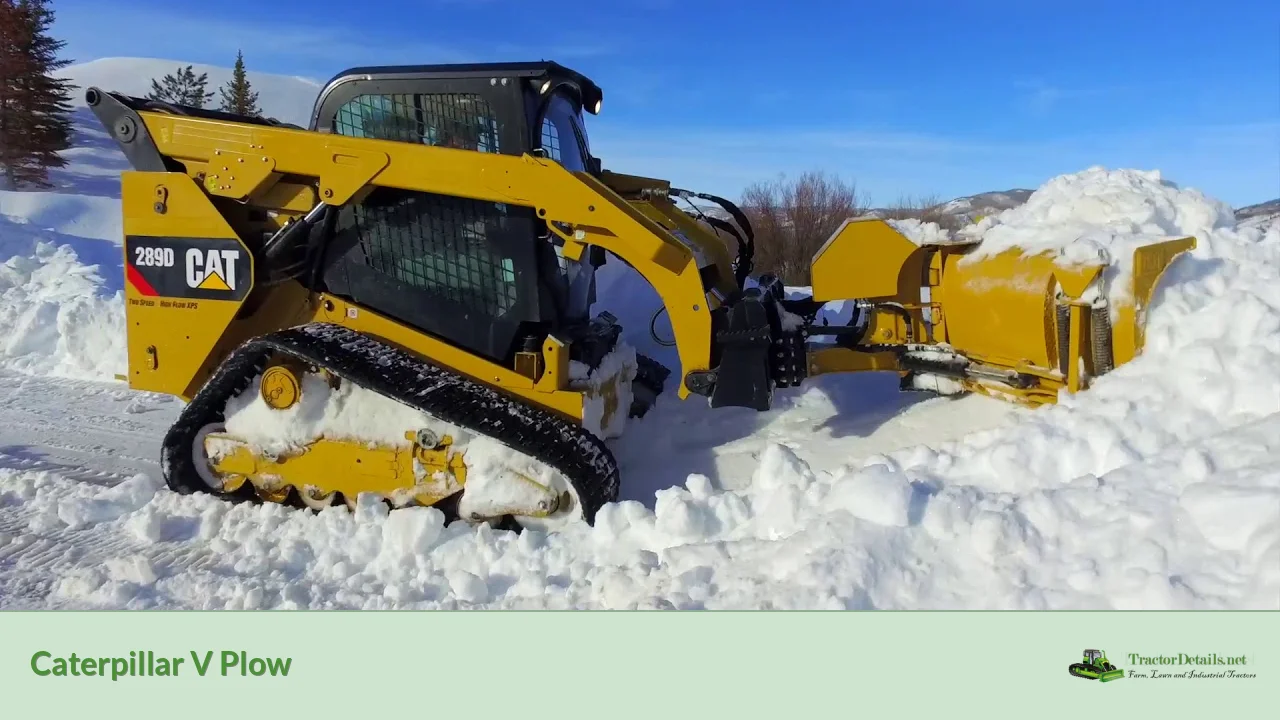Caterpillar V Plow systems are vital components used in various industrial and construction applications, primarily for snow removal or grading practices. However, users often encounter operational challenges that can impede performance. Understanding these issues, how to diagnose them, and knowing effective repair procedures can minimize downtime and ensure the machinery operates at peak efficiency.
Key Takeaways
- Caterpillar V Plow systems are crucial for effective snow removal and grading.
- Common symptoms indicating possible issues include unusual noises, inadequate plowing performance, and hydraulic problems.
- Timely diagnosis and proactive maintenance can prevent significant repair costs.
- Both DIY and professional repair options are available based on the severity of the issue.
Problem Description
Caterpillar V Plows are designed for versatility and efficiency, but like all mechanical systems, they can face issues due to wear and tear, inadequate maintenance, or operational misuse. Problems that arise may lead to reduced effectiveness in snow clearing or grading tasks, which can delay projects and increase operational costs.
The main components of a Caterpillar V Plow include the plow blade, hydraulic lift system, and control mechanisms, and any malfunction within these parts can result in compromised functionality. Understanding these issues is essential for troubleshooting and repair.
Common Symptoms
| Symptoms | Possible Causes |
|---|---|
| Unusual noises during operation | Worn hydraulic components or bearings |
| Inadequate plowing performance | Dull plow blade or hydraulic failure |
| Hydraulic leaks | Damaged hoses or seals |
| Electrical malfunctions | Faulty wiring or control system |
| Difficulty in angling the blade | Hydraulic pressure issues |
| Uneven ground or snow clearance | Misalignment of plow components |
Possible Causes
Understanding what might cause these symptoms is crucial for effective troubleshooting:
- Worn or Damaged Components: Over time, various parts like the hydraulic cylinders, hoses, and control cables may wear out or get damaged, affecting performance.
- Hydraulic System Failures: Issues within the hydraulic system, such as low fluid levels or leaks, can lead to inadequate power for blade movement.
- Electrical Faults: Problems in the wiring or control systems can lead to failure in blade manipulation.
- Poor Maintenance: Neglecting regular maintenance can result in buildup of debris, rust, or even mechanical failure.
- Improper Use: Overloading the plow or using it on unsuitable surfaces can exacerbate wear and lead to breakage.
Diagnosis Steps
Proper diagnosis involves a systematic approach:
- Visual Inspection: Check for obvious signs of damage or wear on the plow blade, hydraulic components, and electrical connections.
- Listen for Sounds: Unusual noises can indicate problems with bearings or hydraulic systems.
- Check Fluid Levels: Ensure hydraulic fluid is at adequate levels and inspect for leaks.
- Test Controls: Operate the controls to see if the plow responds properly and consistently.
- Review Error Codes: If the equipment has diagnostic capabilities, check for stored error codes that can guide the troubleshooting process.
Troubleshooting and Repair Procedures
If issues are identified, the following steps can help in troubleshooting and potentially repairing the Caterpillar V Plow:
DIY Solutions
- Changing Hydraulic Fluid: Flush the hydraulic system and replace it with the manufacturer-recommended fluid to ensure optimal performance.
- Lubricating Moving Parts: Regularly oil or grease moving parts to minimize friction and wear.
- Replacing Worn Edges: If the cutting edge of the plow is dull, replace it as needed for optimal performance.
- Re-tightening Connections: Ensure all bolts, couplings, and fittings are tightened to specification to prevent leaks and ensure stability.
Professional Repair Options
- Hydraulic System Service: If significant hydraulic issues are diagnosed, professional service is recommended to avoid further damage.
- Wiring Inspection: Consult a certified technician to test and repair electrical faults.
- Component Replacement: For severe wear or damage, replacing entire assemblies (like hydraulic cylinders) may be necessary.
Estimated Repair Costs
Repair costs can vary significantly based on the type of issues encountered. Here are some average costs associated with common repairs:
- Hydraulic Repair: $200 - $1,500 depending on parts needed.
- Electrical System Service: $100 - $500 based on fault complexity.
- Plow Blade Replacement: $300 - $700, depending on the model and brand.
- Routine Maintenance: $100 - $300 to cover inspections and minor repairs.
Prevention Tips
To avoid frequent problems with your Caterpillar V Plow, consider the following preventive measures:
- Regular Maintenance: Schedule routine maintenance checks as specified in the operator’s manual.
- Proper Operation: Train operators on the correct use of the plow to prevent misuse.
- Cleaning: After each use, clean the plow to remove any debris or salt that could lead to rust formation.
- Inspection Before Use: Conduct a pre-use inspection to catch any potential issues before they escalate.
When to Seek Professional Help
- Persistent Issues: If you encounter recurring or unresolved problems, seek a professional’s expertise, especially for complex hydraulic or electrical issues.
- Incomplete Repairs: If DIY fixes do not lead to improvement, it’s time to consult a technician.
- Safety Concerns: For any parts that pose a safety risk or require specialized tools for repair, professional services should be engaged.
Conclusion
In summary, understanding the functionality and potential issues of the Caterpillar V Plow is crucial for reliable operation. Common symptoms to look out for include noises, inadequate performance, and hydraulic leaks, each having identifiable causes. With timely diagnosis and maintenance, many issues can be handled in-house, saving both time and money.
However, some cases require professional intervention to ensure safety and proper functionality. It’s essential for owners to stay informed about preventive measures, keeping the plow in optimal working condition throughout its operational life. Following these guidelines not only prolongs the life of the equipment but also enhances its performance, ensuring that it meets the demands of any job efficiently.It seems like your message might have gotten cut off. Could you please provide more context or specify what you would like me to continue with? I'm here to help!
